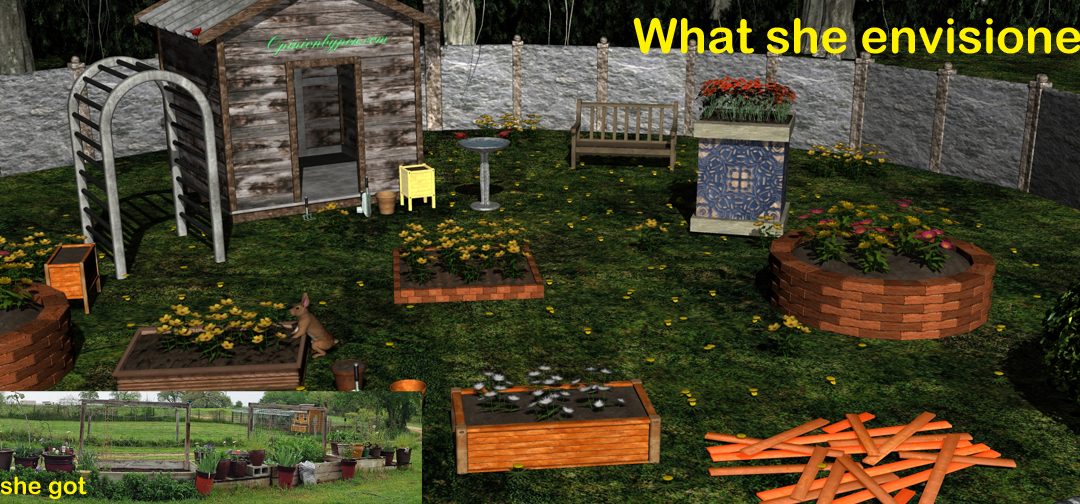I really don’t think it’s fair for my wife to break into uncontrollable laughter every time I explain that as a systems engineer, most of my job involves facilitating communications. I understand why she starts laughing, despite speaking a common language, communication between the two of us is difficult but that’s still no excuse. She simply doesn’t understand how an intelligent person could be so dense.
Fortunately for me, I’m the one writing this blog, thus giving me the perfect opportunity to defend myself.
As a systems engineer, I take a product specification that seems to have been written by marketing and turn it into something the engineers can design to. As I do this, I have to keep in mind that different people interpret words differently. When somebody specifies that they want their widget painted black, I have to determine the details in language the engineers understand. Do they want a flat black, a gloss black? Have you ever considered how many different shades of black there are?
All of these are issues that I have to consider as I attempt to create an unambiguous specification for the engineers. Fortunately for me I’m not the first engineer that has had to specify a color. I can simply specify a standard and a color number.
If you Google FED-STD-595, you’ll find a specification that covers a wide range of colors and finishes. Yes, I know that standard is now obsolete and replaced by AMS–STD–595 but the federal standard is free and you can look it up. Seems easy enough. The thing is, color is strongly influenced by the background light of the viewer. if you’re into photography you already know that because you have to make adjustments for fluorescent lights, for bright sunlight, and for incandescent light.
The difference between a matte finish and a glossy finish is strongly dependent on the angle used to view the surface. If I’m looking straight down at my widget, it may appear to have a matte finish but as the viewing angle increases, I may see the finish as glossy. In other words, if I’m doing my job right, I also have to specify a viewing angle and an illumination light color to verify that my painter has used the proper color.
I’m sure you feel that I exaggerated the situation but I can tell you I’ve already been down this road and found myself trying to adjust both the color and angle of my viewing light in order to verify to my customer that my supplier had selected the proper paint.
I can already see my wife rolling her eyes at this explanation. It doesn’t change the fact that when she tells me she wants me to get a can of blue paint, I have absolutely no clue what she wants. Latex, enamel, urethane, sky blue, robin’s egg blue, teal, calypso, the choices are almost endless. Long years of marriage have taught me that my wife has no clue what FED-STD-595 is and requesting a color number will only result in a deadly stare usually reserved for cats attempting to use her garden as a litterbox.
Worse, this approach to specifications is not limited to paint. This is the way I think. When my wife tells me she wants a raised flower bed she already has a picture in her mind of what she expects. My task is to ask enough questions so that we share the same picture.
As I ask each question, I use her answers to refine my mental picture of her flower bed. Each of her answers create other questions that are necessary to completely define her flower bed. My wife prefers a nonlinear approach where she tells me all the details that she thinks are pertinent. As with my description of colors, each detail demands its own set of questions. My wife quickly gets irritated at this line of questioning and thinks I am deliberately being obtuse in an attempt to get out of work. I would be lying if I said I’ve never done this, but in this case, I’m only trying to take her description and create a proper system specification from it. It’s the way I’m wired.
Out of respect for my wife’s temper, I have tried to short cut this process and make assumptions about what she wants. These endeavors frequently result in, “I know that’s what I said, but I never dreamed you would do it this way.”
The next time you’re trying to describe something to your engineer and they seem particularly obtuse, take a deep breath and let them guide the conversation. What they’re trying to do is correlate your vision with their vision and without that step I can almost guarantee you will be surprised at their results and not always pleasantly.
© 2019, Byron Seastrunk. All rights reserved.












Recent Comments